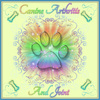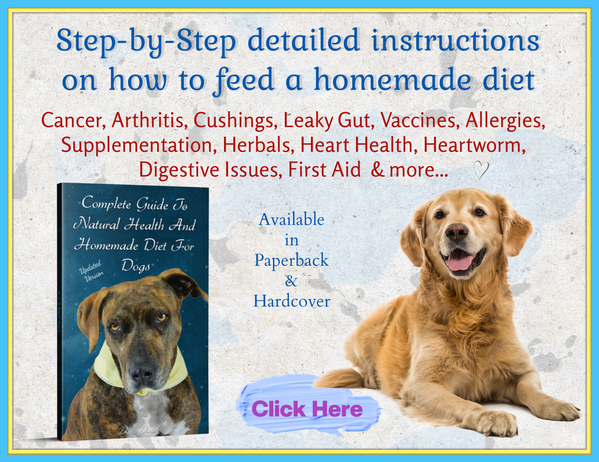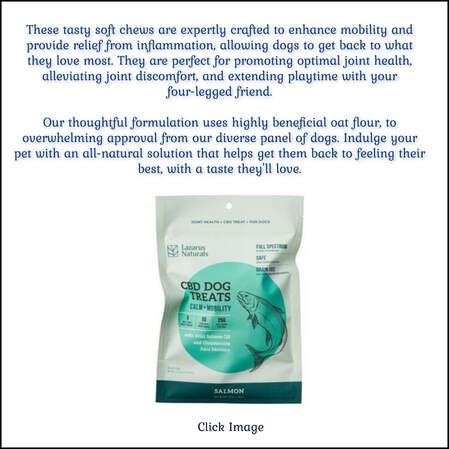|
The Unsolved Mystery of Hypertrophic Osteodystrophy (HOD)
By Doghealth.com For dogs, especially large and giant breeds, “growing pains” is not a metaphor—it’s a fact. And the most mysterious of the several bone diseases which affects young, rapidly growing dogs is Hypertrophic Osteodystrophy, or HOD. HOD is grouped as a young, large breed bone disorder. Occasionally, this condition strikes smaller dogs, but generally it affects large breeds like Shepherds, Setters and Retrievers, causing pain and damage to the growing long bones of the front and rear legs. This condition may affect the front legs and the rear legs, and generally affects the pair of limbs at the same time. ORIGINS: UNKNOWN Probably the most frustrating aspect of HOD is that even veterinarians and other animal experts are unsure of the origins of this condition. We may be inclined to think it’s an inherited or genetic condition, but there currently is no conclusive evidence to support this theory. IS IT MY DOG’S DIET? Nutrition, specifically too much fat and protein in a growing dog’s diet during early development, is the basis of another theory. Too many calories during the first year of life might, theoretically, cause rapid, dramatic growth of the bones, and lowering the caloric intake might therefore produce slower, steady, less risky expansion of the bones. Again, this theory has yet to be proven. PROGNOSIS: UNKNOWN IS IT AN INFECTION? Another theory regarding the basis of HOD is that it’s a bacterial infection. For this reason, many puppies with the painful symptoms of the condition are treated with antibiotics. PROGNOSIS: UNDETERMINED |
|
What is the treatment?
The treatment is generally supportive. Since this is a very painful condition anti-inflammatories and painkillers such as buffered aspirin or carprofen (Rimadyl) are given. (Do NOT give your cat aspirin unless prescribed by your veterinarian.) In addition, the animals are usually given a broad-spectrum antibiotic. Strict rest on a comfortable warm bed is recommended. Feeding a nutritious, highly palatable food will help to encourage some dogs to eat. In severe cases steroids may need to be given to control the pain, but because of the possibility of this being a bacterial disease their use may be contraindicated due to their immunosuppressive qualities. Vitamin C is often supplemented though its benefit may be questionable. NOT ENOUGH VITAMIN C? It is a fact that dogs experiencing HOD do have lowered Vitamin C blood levels. For this reason, in fact, the condition is sometimes called “skeletal scurvy”. Scurvy is a human disease specifically caused by lack of Vitamin C in the diet, and commonly afflicted sailors who were at sea for long periods of time. British mariners often ate large quantities of citrus fruit to offset this risk, which is why Britons are still known as “limeys”! However, in this case, it’s really important to remember that dogs are not people. While many of us drink hot lemon-water and pop a handful of Vitamin C before we fly, or if we begin to feel the sniffly, sneezy warning-signs of a cold coming on, dogs synthesize their own supply of Vitamin C and generally do not respond to extra doses given orally. There is controversy regarding this aspect, but many experts agree that lowered Vitamin C is a symptom – not a cause—of HOD. PROGNOSIS: INCONCLUSIVE |
|
WHAT CAN I DO RIGHT NOW TO MAKE THE PAIN STOP?
Dogs with HOD symptoms also are regularly prescribed buffered aspirin, non-steroids (NSAIDs), and steroids, to arrest the inflammation and the pain it causes. However, all of these powerful drugs pose risks, and may not effectively address the problem. Many experts believe that HOD is, in fact, caused by the interaction of multiple causes, and therefore prescribing drugs becomes complicated. For instance, if we believe the source of the symptoms to be bacterial, steroids should not be prescribed, since steroids suppress the natural immunosuppression (immune) system, and may allow infections to proliferate—the body on steroids is less prepared to fight off bugs like bacteria and viruses. This is especially true of dogs with HOD, who commonly exhibit symptoms including high fever and high white blood-cell count. No Drugs There is a definite downside to giving your dog these drugs, under any circumstances: antibiotics, NSAIDs and steroids all present the possibility of strong side-effects. A non-toxic alternative such as Winston’s Joint System offers a safer solution. Winston’s Joint System helps the body of a growing puppy rebuild and repair itself, without the risk of dangerous drugs. This holistic, natural approach may be most appropriate for dogs experiencing any kind of leg and joint pain, since the specific causes of HOD are at this time impossible to define or identify. |
|
WHAT WE DO KNOW ABOUT HOD:
Other names for HOD are Moller-Barlow’s disease, osteodystrophy II, and metaphyseal osteopathy. The disease produces extreme pain in the limbs, along with stiffness and lameness, which can be permanent if the condition is not effectively addressed. HOD generally affects large breeds and mixes during the first few months of life, and male dogs are more prone to the condition than are female dogs. These tendencies are believed to be generally true because large breeds experience more dramatic bone growth during the first year of life than small breeds do, and males generally grow larger, faster, than females. Of course, there are many exceptions to all of this. Is your dog… A large breed, or large breed mix? Still growing, between the ages of 3 – 6 months in particular? Having difficulty getting up from a resting position? Limping? Favoring one side, or trying to keep weight off one or more leg? Lethargic, not interested in playing, running, walking? Not hungry, even for treats? If you’re nodding your head, your dog may be at risk for HOD. What’s so frustrating for dog-lovers and vets is that there is no clear precedent for diagnosis and treatment. This common condition causes extreme suffering in the short term, permanent, disabling lameness in the long term. What is most frustrating: the array of conventional drugs may seem almost random, and definitely risky, as potential treatment for your dog’s HOD. What you can do immediately is help your dog’s body heal naturally with Winston’s Joint System. This treatment has effectively reduced pain for thousands of dogs, and it works it two ways. First, the supplements stop inflammation, which lowers the intensity of the discomfort, encouraging the dog to eat and rest normally again. Second, Winston’s Joint System boosts the growth of cartilage and generation of synovial fluid in the dog’s joints, creating stronger, healthier tissue and allowing your pet greater mobility and flexibility—meaning greater quality of life. |
|
Here’s what happens structurally when HOD is present:
Swelling of the growth plates (called metaphysis) in the leg bones causes inflammation, pain, lameness and lethargy. Typically, the areas of bone affected by HOD are the ends of the radius, ulna (long bone from dog’s “elbow” to “wrist”) and tibia (long bone from the dog’s “knee” to the hock) The condition causes these bony plates to grow irregularly and to distort the dog's joints. This may be observed by obtaining and examining X-rays of the dogs legs. This abnormal growth, where extra bone changes the structure and mechanism of the affected joint, causes pain, and affects the dog's gait and ability to walk. Dogs with HOD begin to slow down, and ultimately may show reluctance to move—since movement causes pain. Often, dogs with HOD run a high fever, which supports the theory that the condition is caused by an infection. This theory is hard to verify, since collecting a bacterial culture from the affected site deep inside the bone is very difficult. Sometimes, the dog’s teeth and skull-formation are also affected by HOD, but the primary location for debilitating damage are in the four limbs of the growing puppy. Here’s what you can do right now: Check your dog’s temperature. If your dog runs a high fever, HOD may be the reason. If not, your dog may have a bacterial or viral infection. In any case, take your dog to the vet immediately. Make your dog comfortable. Provide a resilient, supportive, cushioned dog bed to insulate your dog’s joints and bones for proper rest. This is always important, but especially when your puppy’s legs are inflamed and hurting. Before you commit to a regimen of pain-killers, including potentially toxic aspirin, NSAIDS, and steroids – and before you agree to start your puppy on a regimen of antibiotics—consider the long-term. What’s most important right now: stopping the pain. What’s important for your puppy’s future: building healthy joints and tissues without side-effects or the risk of toxicity or adverse interactions. |
**Canine Arthritis And Joint is intended for informational, educational and entertainment purposes only and is not a substitute for medical advice, diagnosis or treatment. Do not attempt to self-diagnose or treat any health condition. You should always consult with a healthcare professional before starting any diet, exercise or supplementation program, before taking any medication, or if you have or suspect your pet might have a health problem. The opinions expressed by Canine Arthritis And Joint are not to be replaced for medical care. This website and the information contained herein have not been evaluated by the Food and Drug Administration. The information and opinions on Canine Arthritis And Joint are not intended and cannot be used to diagnose, treat, cure, or prevent any disease. This applies to people and pets!
This site uses affiliate links such as banners you may see that allows for paid commissions.
This site uses affiliate links such as banners you may see that allows for paid commissions.
Canine Arthritis And Joint © Copyright 2015-2024
Designed By Paw Prints Web Design
Designed By Paw Prints Web Design











